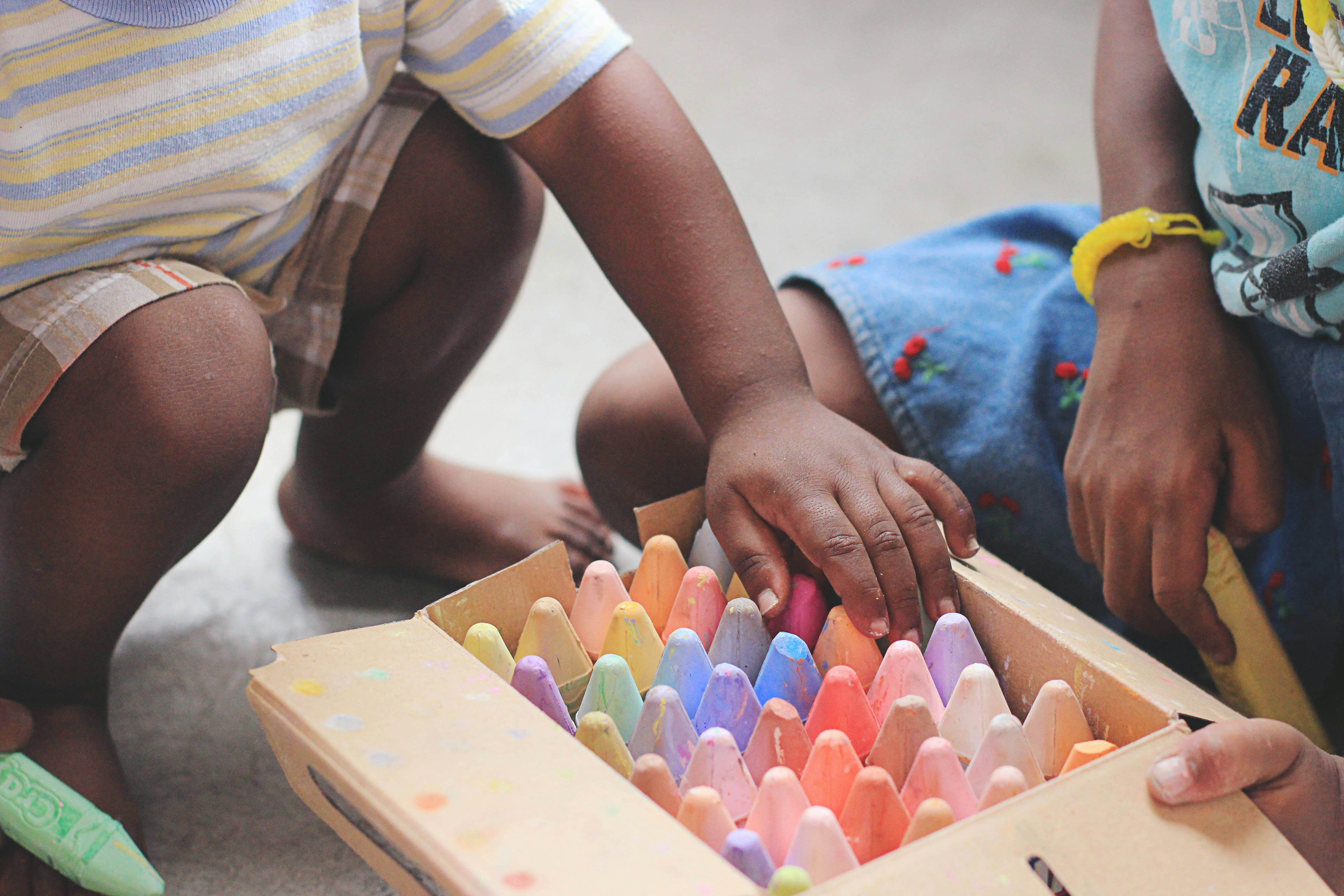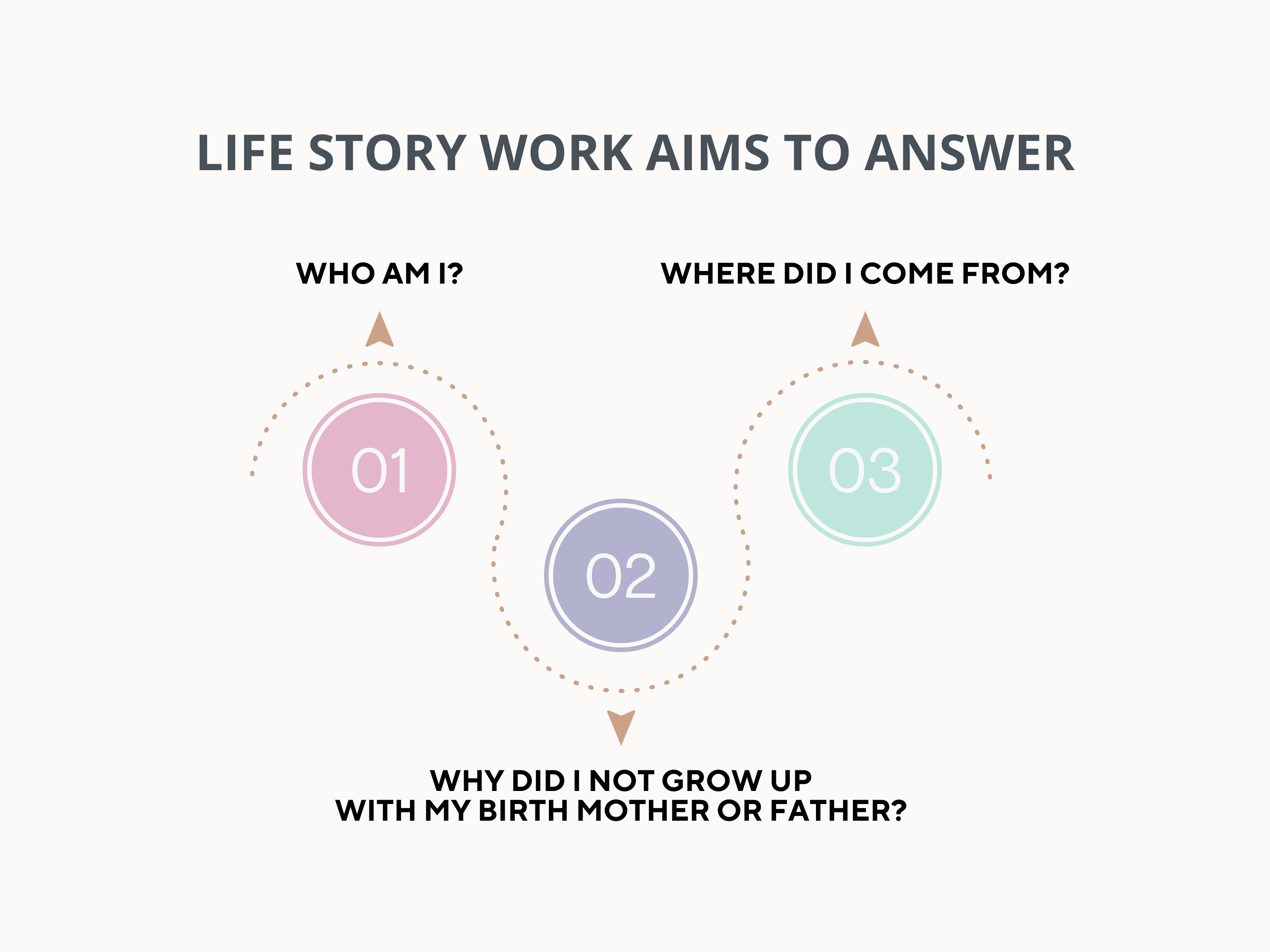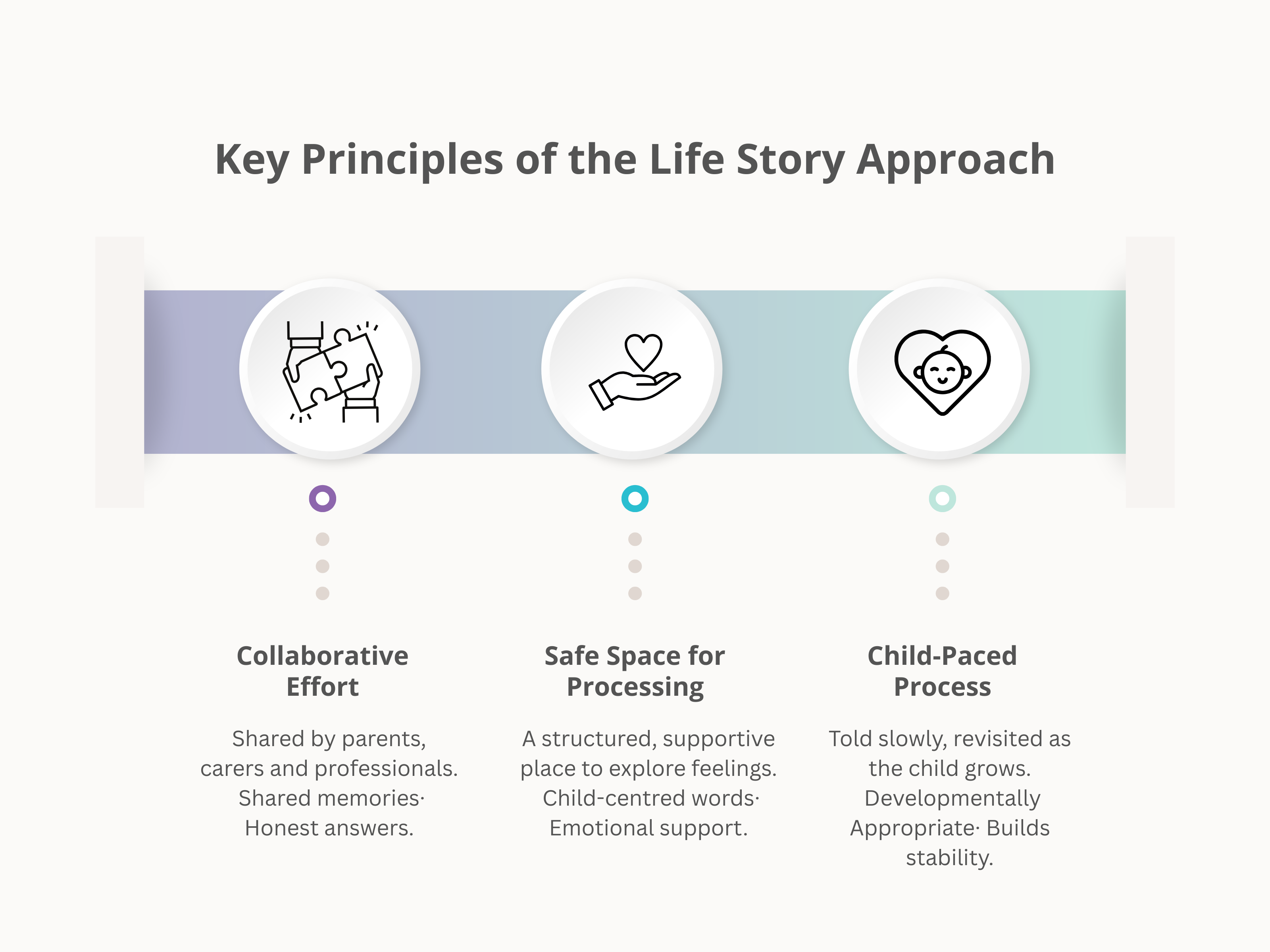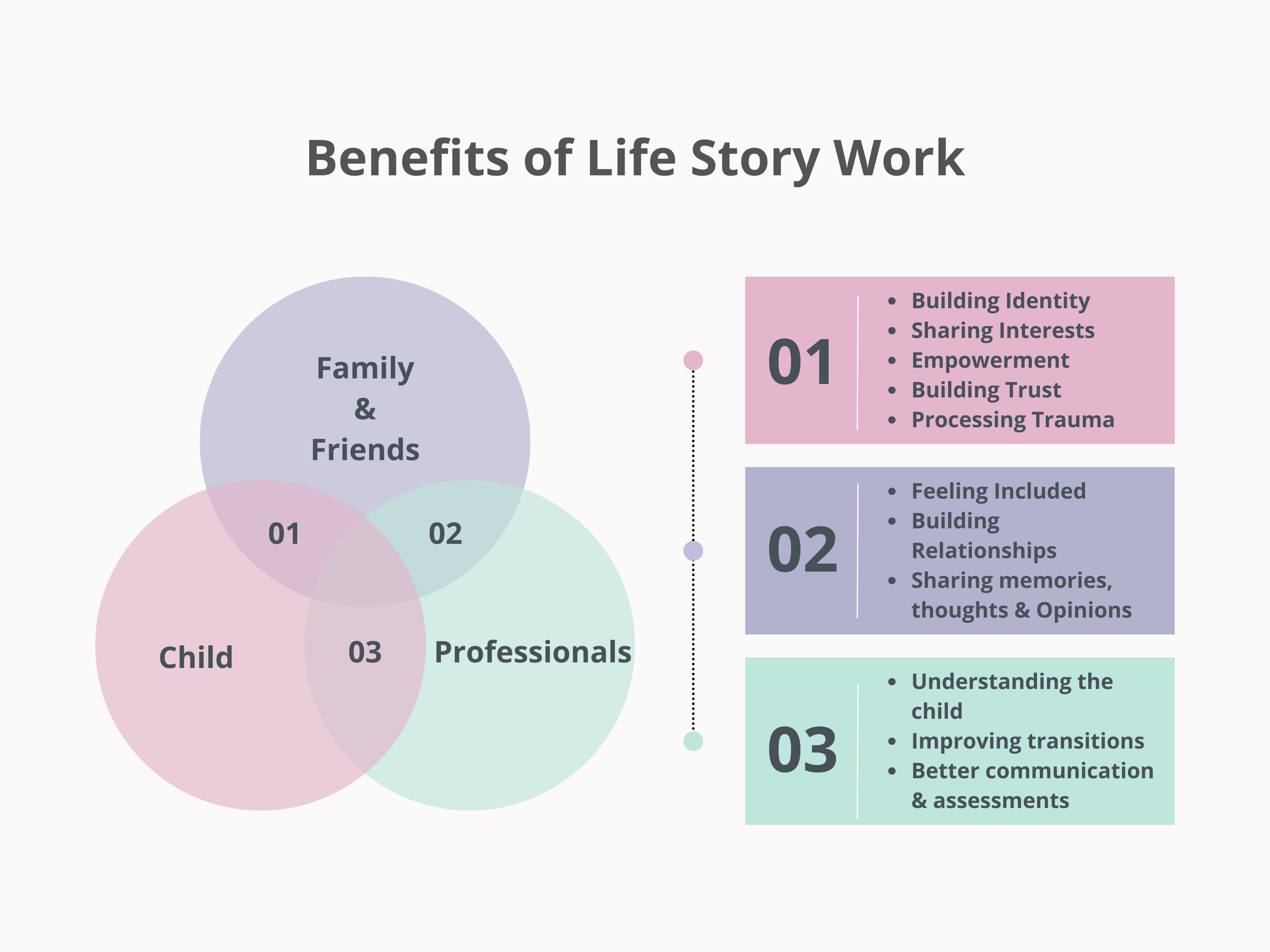For children separated from their birth families, life can often feel like a puzzle with missing pieces. Life story work is a therapeutic process that helps these children make sense of their past and understand how it shapes their present and future. This intervention is particularly valuable for those who have experienced trauma, family separation, or major life transitions.
As a fundamental component of quality care in child welfare systems, life story work provides children with the narrative thread that connects their journey through care, helping them build a coherent sense of self despite disrupted beginnings.
Even with its recognised importance, the quality of life story work varies widely due to time pressures, high staff turnover, and insufficient training. This article examines the essence of life story work, its significance for children in care, and its specific application within family assessment centres.

Key Takeaways
- Definition: Life story work is a planned, child-centred process to help children make sense of their past and build identity.
- Evidence: Research links life story work (LSW) to improved well-being and clearer identity for children in out-of-home care.
- Guidance: UK guidance recommends a consistent, planned approach to LSW in looked-after children’s services.
- Family assessment centres: Life story work supports court evidence, transition planning, and helps create meaningful records during placements.
- Digital tools: At FamilyAxis we have incorporated a life story feature into our software to enhance how life stories are recorded and shared.

What is Life Story Work?
Knowing where we come from is a fundamental human need, vital for forming a secure sense of identity. For children and young people growing up away from their birth parents, this basic right to their own history is often compromised by a story that is fragmented and disputed. Life story work is designed to meet this need, helping them understand why they could not remain with their birth family and make sense of their life journey.
Emerging in the mid-1980s with a focus on adopted children, life story work was born from a recognition of the profound impact of separation and the importance of family history and cultural heritage (Aldgate & Simmonds, 1988). While its practice has evolved, it has powerfully re-emerged alongside a renewed emphasis on relationship-based social work and trauma-informed care. Today, it is recognised as essential not only for adopted children, but for all children in foster or kinship care, or those returning to their birth families (Fahlberg, 2012; Ryan & Walker, 2016).
At its core, life story work is the therapeutic process of building a coherent, developmentally appropriate life narrative. It brings together the child’s memories, information from their birth family, professionals, and clear, age-appropriate explanations of their past.
This process addresses a fundamental inequality: while children in birth families absorb their history daily, children in care often lack this continuity. Life story work actively constructs this narrative, preventing the development of damaging fantasies and confusion about their identity.

This process is defined by several key aspects:
- A Collaborative Effort: It is a team endeavour, where everyone in the child's life—from parents and social workers to foster carers and teachers, contributes by sharing memories and answering the child's questions honestly and as they arise.
- A Safe Space for Processing: The work provides a structured and supportive environment for a child to process complex emotions and trauma, using factual, child-centred language to help them understand difficult experiences.
- A Child-Paced Process: The narrative is shared gradually, paced according to the child's emotional readiness, and revisited over time as they grow and their understanding deepens.
Ultimately, this process helps a child understand their past, comprehend their present circumstances, and build a stable foundation for their future.

The value of life story work is well-established in both practice and policy. Its core benefits are consistently linked to:
- Stronger Identity Formation: Creating a coherent life narrative to combat confusion and build self-worth.
- Healthier Emotional Processing: Providing a safe structure for children to understand and heal from trauma.
- More Stable Placements: Equipping carers with the context to respond with empathy, reducing breakdowns.
Life story work creates a ripple effect of understanding, improving the practice of professionals and strengthening the support network of family and friends around the child.

Examples of Life Story Work
Life story work takes many forms, and will always need to be adapted to a child's age and individual needs. Here are some examples:
- Life Story Books: Create a chronological book with photos and narrative to explain a child's journey.
- Memory Boxes: Collect tangible items like toys, clothes, and tickets that hold personal significance.
- Later Life Letters: Provide a detailed, honest account of the reasons for adoption or being in care.
- Timelines: Build a secure, dated record of milestones and memories.
- Direct Work Tools: Use worksheets or genograms (detailed family trees) to map relationships visually.
- Carer's Diaries: Encourage foster families/professionals to record daily life, achievements, and special moments.
- Celebration & Event Records: Document birthdays, holidays, and outings with photos and souvenirs.
- Developmental Milestone Logs: Track key "firsts" like words and steps alongside favourite foods and hobbies.
- Anecdote & Story Collections: Write down funny or meaningful conversations and everyday moments.
- Photo Albums with Context: Curate images of key people, homes, and pets with clear captions and dates.

Life Story Work in Residential Family Centres
Residential family centres (RFC) are short-term settings that collect evidence, observe family interactions, and help courts decide on long-term plans for children. In this context, life story work is useful in several specific ways:
- Creating court-evidenced narratives: RFCs routinely prepare reports for family courts. High-quality life story records strengthen the child’s case narrative, providing verified dates, observations and memories that can be relied upon in assessments and reports.
- Capturing early memories and milestones: Short placements can still be rich with the child’s firsts (first solid food, favourite toy, first words). Documenting these reliably preserves the child’s personal history for future carers.
- Supporting transitions and placement moves: When children move between placements (including temporary foster care), having a clear life story record reduces loss, maintains continuity of care, and supports positive endings.
- Involving parents and families where appropriate: RFCs often work with parents as part of assessments. Life story work can include parents’ memories and explanations (where safe), helping children understand family context while ensuring safeguarding concerns are managed.

Integrating Life Story Work into Digital Tools
Taking the research and best practice into mind, we designed a dedicated Life Story Timeline within FamilyAxis. This feature gives professionals a tool on each child's profile to easily log memories and milestones during their time at the centre.
Recognising that professionals are often short on time, it's built directly into the software they use daily to complete assessments and run the home; allowing them to quickly add important moments to a child's ongoing narrative.
These entries can later be compiled into a PDF and, where safe and appropriate, shared with carers or the child. This ensures the child remains at the centre of the process, combining efficiency with a vital human touch.

The FamilyAxis Life Story Timeline
The FamilyAxis timeline is built to directly address the needs of residential family centres. Staff can:
- Add dated memories and milestones as they happen.
- Organise entries chronologically, building a clear, coherent narrative over time.
- Share securely with authorised carers or receiving placements for handover.
- Preserve the child's right to information, as the timeline is requestable by them when they are older.
Why this helps in practice: In residential family centres, important everyday details are recorded under pressure. A dedicated timeline ensures these memories are captured consistently, dated, and presented in a child-friendly format that supports both therapeutic work and court reporting.
Digital timelines complement physical life story books and boxes, making the record portable (with appropriate permissions) and readily available to future carers. This aligns with best practice, which advises a combination of tangible keepsakes and a coherent, well-documented narrative.

Conclusion
Life story work is a core part of good practice for children in care. It helps children build identity, process experiences, and retain meaningful memories — all of which support emotional wellbeing and safer placement transitions. For family assessment centres, structured life story recording is especially valuable: it strengthens court evidence, supports positive endings, and preserves the small but powerful details of a child’s life. Thoughtfully designed digital tools — like the FamilyAxis timeline — can sit alongside life story books and memory boxes to protect, organise and share these precious records when the child needs them most.
Sources
- Aldgate, J. (1988). Direct Work with Children: A Guide for Social Work Practitioners. B. T. Batsford Limited. (Link not found in search results)
- Baynes, P. (2022). Life story work. In http://www.researchinpractice.org.uk/. Retrieved November 19, 2025, from https://proceduresonline.com/trixcms1/media/13578/life-story-work-practice-tool.pdf (Link could not be verified for public access)
- Bell, J. (2021, February 4). How Life Story Work can help care experienced children. CELCIS. Retrieved November 19, 2025, from https://www.celcis.org/knowledge-bank/search-bank/blog/2021/02/how-life-story-work-can-help-care-experienced-children (Link could not be verified)
- Bolton Council. (2024, October 31). Life story work guidance. Retrieved November 20, 2025, from https://boltoncs.trixonline.co.uk/chapter/life-story-work-guidance#who-should-complete-life-story-work-and-how-is-this-recorded
- Buchanan, A. (2016). The Experience of Life Story Work: Reflections of young people leaving care [Thesis (DClinPsy), Cardiff University]. (Link not found in search results)
- Child Action Northwest. (n.d.). Life story work. In *http://www.canw.org.uk/. Retrieved November 21, 2025, from https://canw.org.uk/wp-content/uploads/2021/07/Life-Story_Booklet.pdf (Link could not be verified)
- Cowell, S. (2025, June). Importance of life story work. amberfamily.co.uk. Retrieved November 19, 2025, from https://www.amberfamily.co.uk/importance-of-life-story-work/ (Link could not be verified)
- Fahlberg, V. (2012). A child’s journey through placement. Jessica Kingsley Publishers. (Link not found in search results)
- Introduction to residential family centres. (2024, May 24). GOV.UK.https://www.gov.uk/government/publications/introduction-to-residential-family-centres/introduction-to-residential-family-centres
- Kinship charity. (2024, November 14). What is kinship care? - Kinship. Kinship. https://kinship.org.uk/what-is-kinship-care/
- Kinship charity. (2025, January 27). About life story work - Kinship. Kinship. Retrieved November 20, 2025, from https://kinship.org.uk/support-and-advice/advice-and-information/about-life-story-work/
- Kontomichalos-Eyre, S. A., Lake, A. J., & McGillivray, J. A. (2022). Life story work for children and youth in out of home care: A systematic review and synthesis of qualitative studies. Children and Youth Services Review, 144, 106697. https://doi.org/10.1016/j.childyouth.2022.106697
- NICE. (2021, October 20). Recommendations | Looked-after children and young people | Guidance | NICE. https://www.nice.org.uk/guidance/ng205/chapter/recommendations?#learning-and-education
- Sheffield City Council. (2024, October 9). Life Story Work for children looked after. Retrieved November 21, 2025, from https://sheffieldcs.trixonline.co.uk/chapter/life-story-work-for-children-looked-after#what-is-life-story-work
- Stockport Council. (n.d.). Life Story work for Looked After Children guidance. In *https://www.stockport.gov.uk/. Retrieved November 19, 2025, from https://trixcms.trixonline.co.uk/api/assets/stockportcs/650ae8fa-1e73-48be-9f77-b8f6dd553055/life-story-work.pdf (Link could not be verified for public access)




